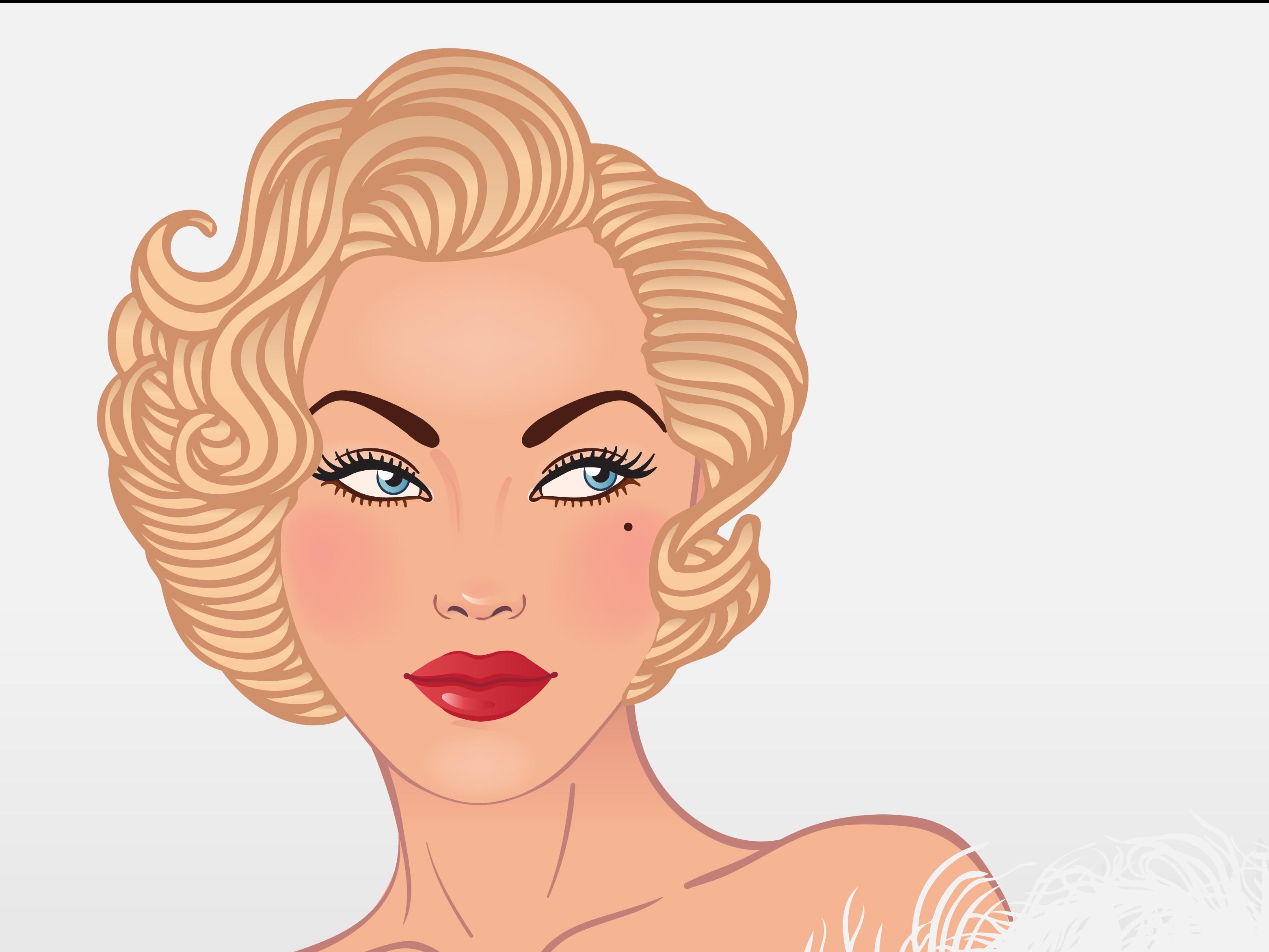
Retro party invitation design template (Young pretty blonde woman with makeup and haircut in 1950-s style)
Dr Lucia Gannon writes that hair is not a trivial topic for many people, but an important part of their racial and cultural identity
“Never shall a young man thrown into despair
By those great honey-coloured
Ramparts at your ear,
Love you for yourself alone And not your yellow hair.”
WB Yeats
As a child, I was jealous of my older sister’s long blonde hair. I felt short-changed, as mine was thin, lanky, mousy-brown hair that my mother insisted on keeping cut short in the hope that it would somehow grow thicker. Everyone seemed to agree that thicker was better. In my case, this intervention did not have the desired result and when at the age of 12, my short, unremarkable hair led me to be mistaken for a boy in a drapery shop – yes it was that long ago that it was called a drapery shop – I put my foot down and demanded an end to the short hair cuts. But the seeds of dissatisfaction had been sown and for years I continued to compare myself unfavourably to others and longed for a different me, with a head of sleek blonde tresses, or glossy black curls. As I got older, I consoled myself with the fact that what did not kill me made me stronger and imagined that because of this unfortunate turn of fate, I had a much greater understanding of the challenges faced by others who like me were born without “great honey-coloured ramparts” at our ears.
But I
was wrong. Every so often I hear a voice or read a piece of prose or poetry
that shines a big bright light into the dark corners of my mind; the corners
that contain the things that I don’t know that I know! On this occasion it was
an interview with a woman called Emma Dabiri who had written a book called Don’t Touch My Hair.
Emma grew
up as a mixed-race child in Ireland, in a time when she did not know any other
black people. Her mother was white-Trinidadian, Emma’s father black Nigerian.
While her skin was light in colour, it was her hair that singled her out as
being different and caused her to feel deep shame about her appearance. Afro
hair has been at the opposite end of the spectrum to what has been considered
healthy and attractive in western culture. Long, flowing, curly, sleek, glossy,
and shiny are just some of the adjectives used to describe ideal hair in white
cultures. Coarse, dull, frizzy, matted, bushy, and wild, are words sometimes
associated with Afro hair.
As I
listened to Emma speak, I felt as if I was developing a new set of lenses that
were focusing on all the people in the world that I had never really seen, in
particular all the hair styles that I had never wondered about, apart from
perhaps fleeting thoughts about how long it must take black people to complete
those intricate, twisted, braided and beaded hairstyles. In fact, as an adult,
I barely gave hair a thought at all, deeming it far too frivolous a topic for
prolonged consideration.
Not so
any more. Apparently, racialisation is as much about tightly coiled hair as
colour. Afro hair is the one characteristic that identifies African descendants
from every other race. Hair texture had symbolic potency during the years of
colonialism, a visual language that spoke volumes about a person’s origins and
their right, or not, to be treated fairly. In 1905 a German named Fisher
devised a “hair gauge” to assess the “whiteness” of people of mixed race.
Depending on the score, mixed race children were sterilised during the Nazi
regime to prevent “contamination” of the white race by Negro blood.
Afro
hair does not grow down. It grows up and out and if it is to be managed it
needs to be twisted, braided, coiled, oiled, parted, and detangled. These
intricate hairstyles are not a choice, but become a necessity, in order to fit
into western culture. As recently as 2016, a group of young girls were told
they would not be allowed into school unless they straightened their Afro hair
styles and made themselves more “presentable”. And this was in Pretoria High
School in South Africa. In white cultures Afro hair is stigmatised to the point
of taboo. Dabiri goes so far as to say that if Michelle Obama had ever appeared
in public with her hair in its natural state, Barack would never have been
elected president. Interestingly, in her memoir, Becoming, Obama never makes any special mention of her hair, even though it must
have taken hours to straighten and style for her many public appearances.
And so,
as I listened to this highly intelligent and eloquent woman recount how her
personal experiences had inspired her to explore the political and racial
implications of something as seemingly trivial as hair texture, I was happy to
let my own bad hair days fade into insignificance. On a global scale, they were
indeed trivial.
Dr Lucia Gannon
is author of ‘All in A Doctor’s Day’ (Gill, 2019)





Leave a Reply
You must be logged in to post a comment.